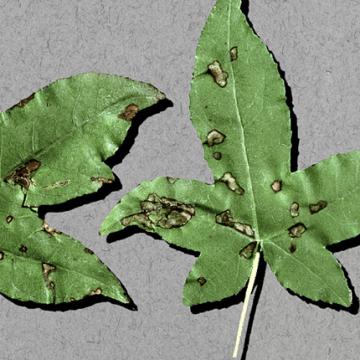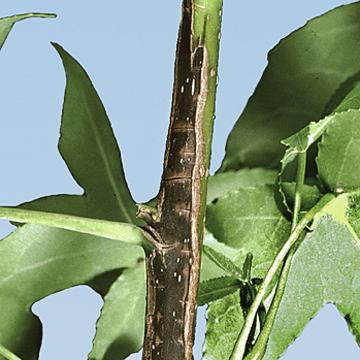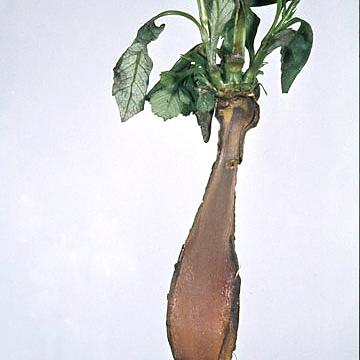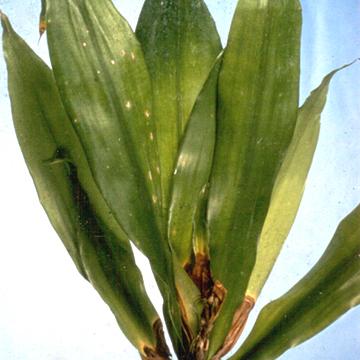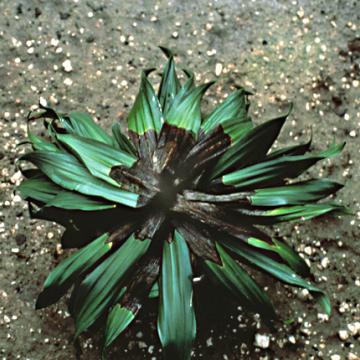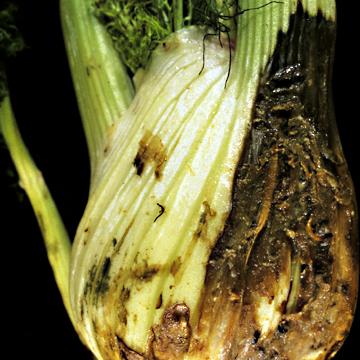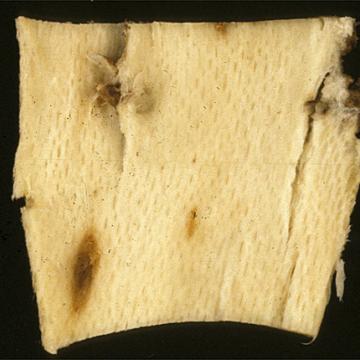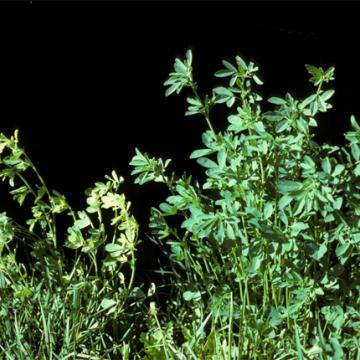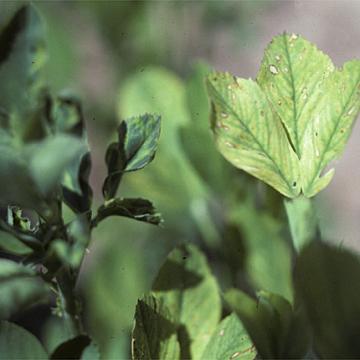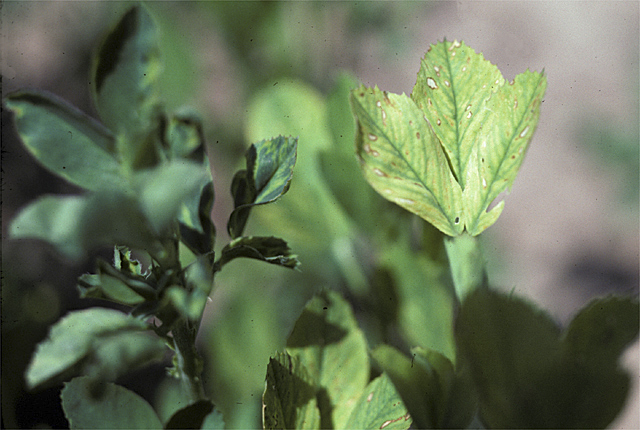DISEASE: Bacterial leaf spot and canker
HOST: Sweetgum
Leaves with irregular necrotic lesions.
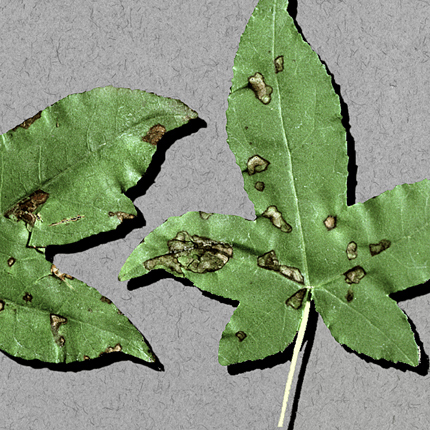
Bacterial leaf spot and canker | Sweetgum
DISEASE: Bacterial leaf spot and canker
HOST: Sweetgum (Liquidambar styraciflua)
PATHOGEN: Pseudomonas syringae pv. syringae
SOURCE: A. Bishop
DISEASE: Bacterial leaf spot and canker
HOST: Sweetgum
Stem canker of sweetgum.
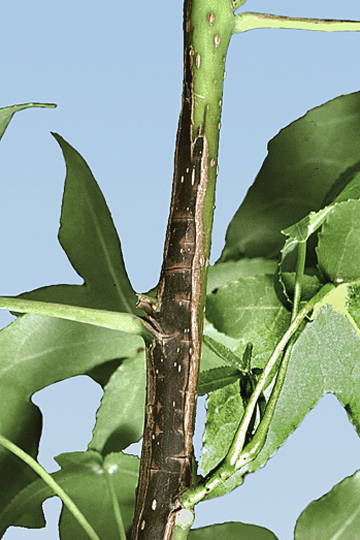
Bacterial leaf spot and canker | Sweetgum
DISEASE: Bacterial leaf spot and canker
HOST: Sweetgum (Liquidambar styraciflua)
PATHOGEN: Pseudomonas syringae pv. syringae
SOURCE: A. Bishop
DISEASE: Bacterial rot
HOST: Dahlia
Longitudinal section of dahlia with discolored, rotted tissues.
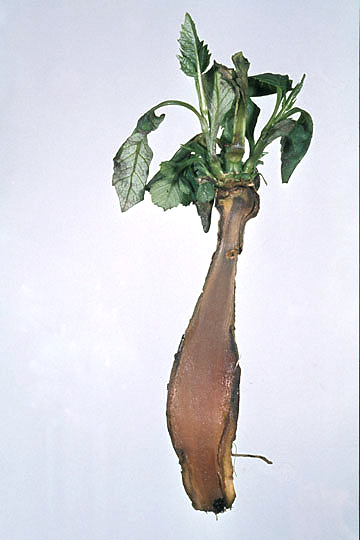
Bacterial rot | Dahlia
DISEASE: Bacterial rot
HOST: Dahlia (Dahlia sp.)
PATHOGEN: Dickeya sp.
PATHOGEN SYNONYM: Erwinia chrysanthemi
SOURCE: J. Young
DISEASE: Bacterial rot
HOST: Dracaena
Rot at base of leaves.
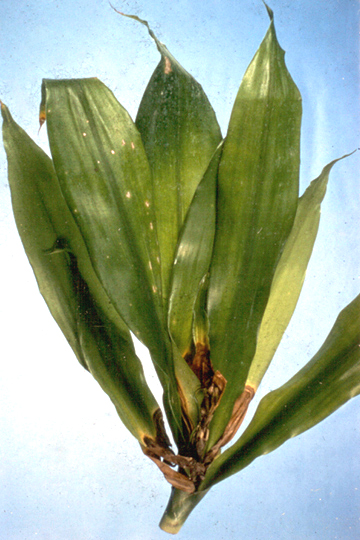
Bacterial rot | Dracaena
DISEASE: Bacterial rot
HOST: Dracaena (Dracaena deremensis)
PATHOGEN: Dickeya sp.
PATHOGEN SYNONYM: Erwinia chrysanthemi
SOURCE: A. Alvarez
DISEASE: Bacterial rot
HOST: Dracaena
Systemic rot throughout central stems.
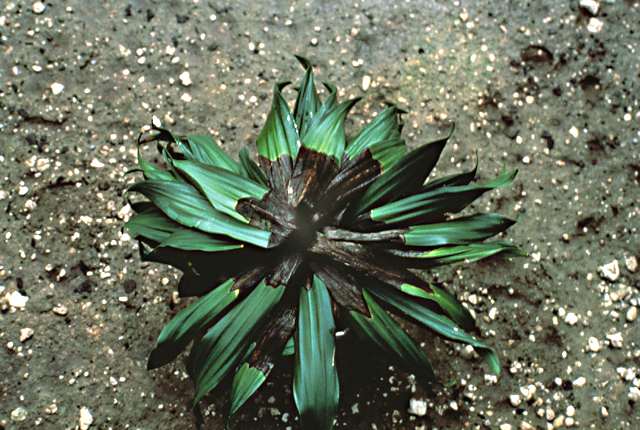
Bacterial rot | Dracaena
DISEASE: Bacterial rot
HOST: Dracaena (Dracaena deremensis)
PATHOGEN: Dickeya sp.
PATHOGEN SYNONYM: Erwinia chrysanthemi
SOURCE: A. Chase
DISEASE: Bacterial rot
HOST: Fennel
Soft rot of fennel.
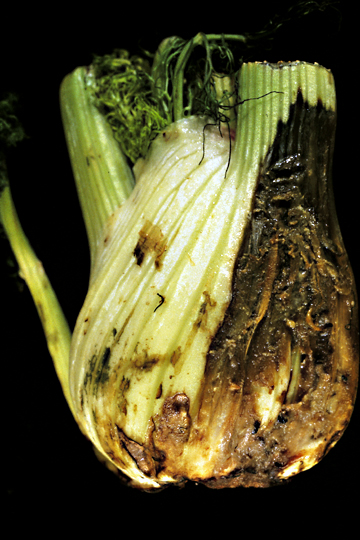
Bacterial rot | Fennel
DISEASE: Bacterial rot
HOST: Fennel (Foeniculum vulgare)
PATHOGEN: Dickeya sp.
PATHOGEN SYNONYM: Erwinia chrysanthemi
SOURCE: R. Davis
DISEASE: Bacterial wilt
HOST: Alfalfa
Longitudinal section of defined brown gum pockets on inner surface of root bark.
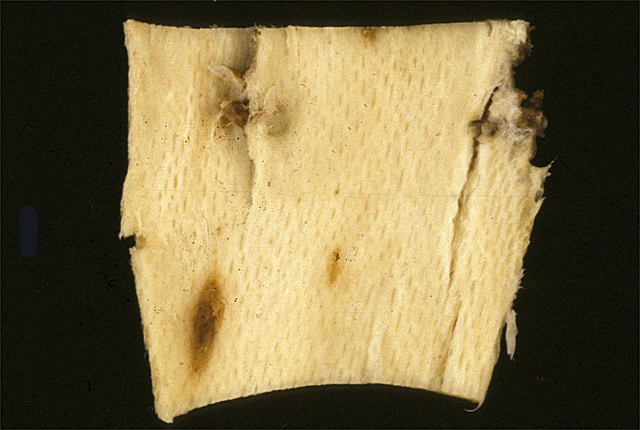
Bacterial wilt | Alfalfa
DISEASE: Bacterial wilt
HOST: Alfalfa (Medicago sativa)
PATHOGEN: Clavibacter michiganensis subsp. insidiosus
SOURCE: S. Thomson
DISEASE: Bacterial wilt
HOST: Alfalfa
Infected plant (left) with typical symptoms of stunting and chlorosis. Other characteristic symptoms are spindly stems and small distorted leaflets. Healthy plant (right).
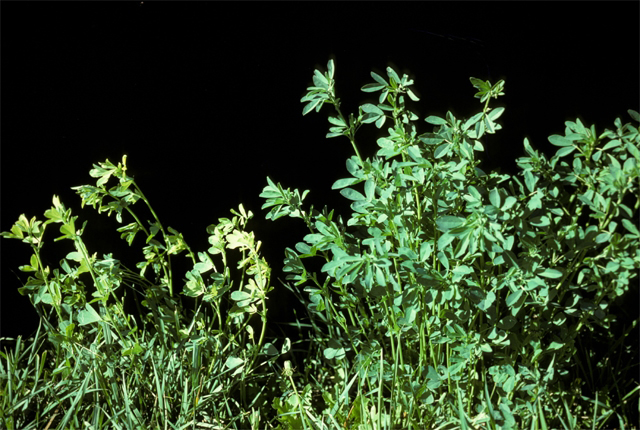
Bacterial wilt | Alfalfa
DISEASE: Bacterial wilt
HOST: Alfalfa (Medicago sativa)
PATHOGEN: Clavibacter michiganensis subsp. insidiosus
SOURCE: S. Thomson


